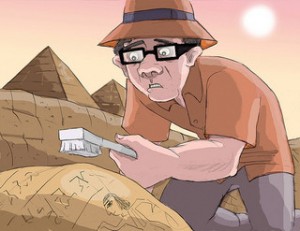 Toss away your preconceived notions of the stereotypical archaeologist – today’s artifact sleuths are harnessing a cutting-edge geospatial technology – Geographic Information Systems (GIS) – to identify, document, and better understand ancient cultures from around the world. Objects from thousands of years ago, buried in the dirt, are now being discovered and examined in new ways with the help of a technology most often associated with modern highways and byways!
Toss away your preconceived notions of the stereotypical archaeologist – today’s artifact sleuths are harnessing a cutting-edge geospatial technology – Geographic Information Systems (GIS) – to identify, document, and better understand ancient cultures from around the world. Objects from thousands of years ago, buried in the dirt, are now being discovered and examined in new ways with the help of a technology most often associated with modern highways and byways!
It’s the perfect marriage of research and technology – something old and something new. Humans exist in space and over time, so what’s better to locate remnants of ancient cultures than GIS technologies?
As you know from our many blog posts on GIS, the library does a lot to support this evolving technology in service to many fields of study. If you’re interested, pay them a visit.
Scholars in Near Eastern Studies, Classics, and the University’s Archaeological Museum are among a growing number of Hopkins’ researchers across many disciplines who use GIS for their work.
If you want to learn more, check out books on GIS applications in archaeology and books on methodologies in archaeology, in general. We also have a great GIS & Maps library guide – and while you’re in the vicinity, try other research guides like Anthropology, Classics, and Near Eastern Studies.
